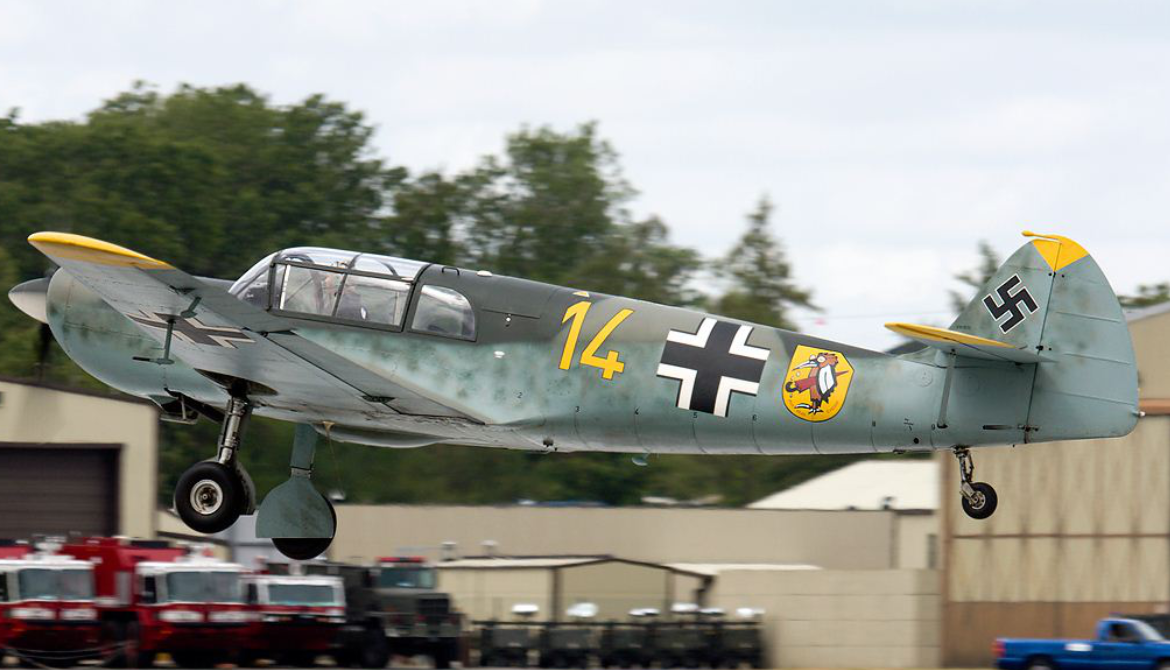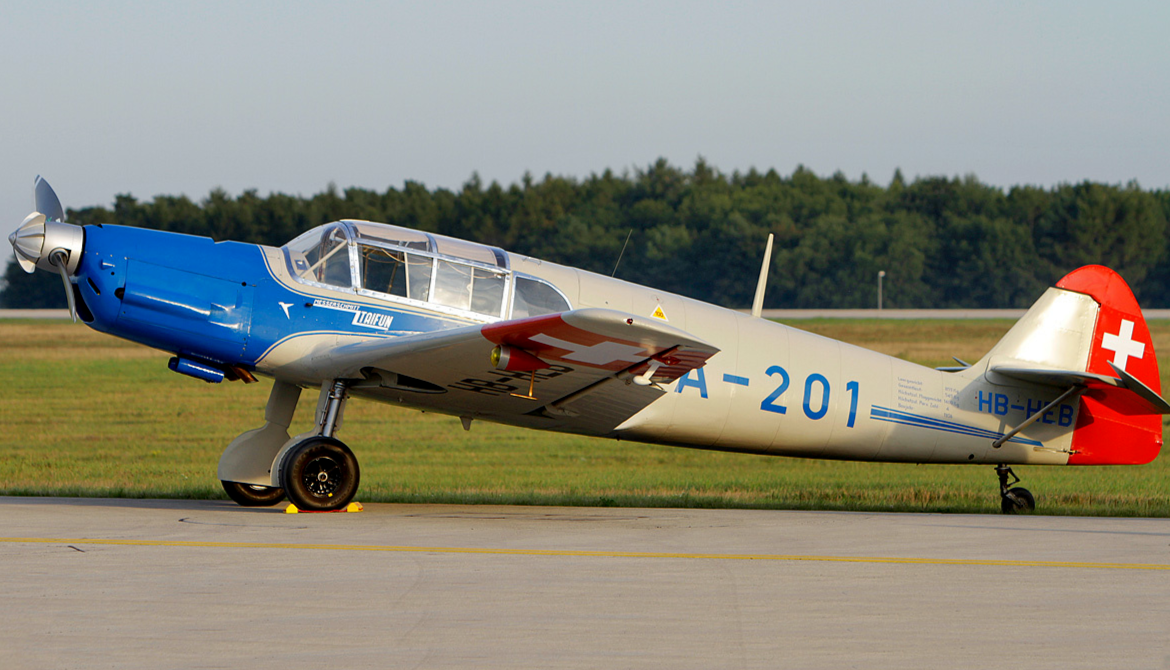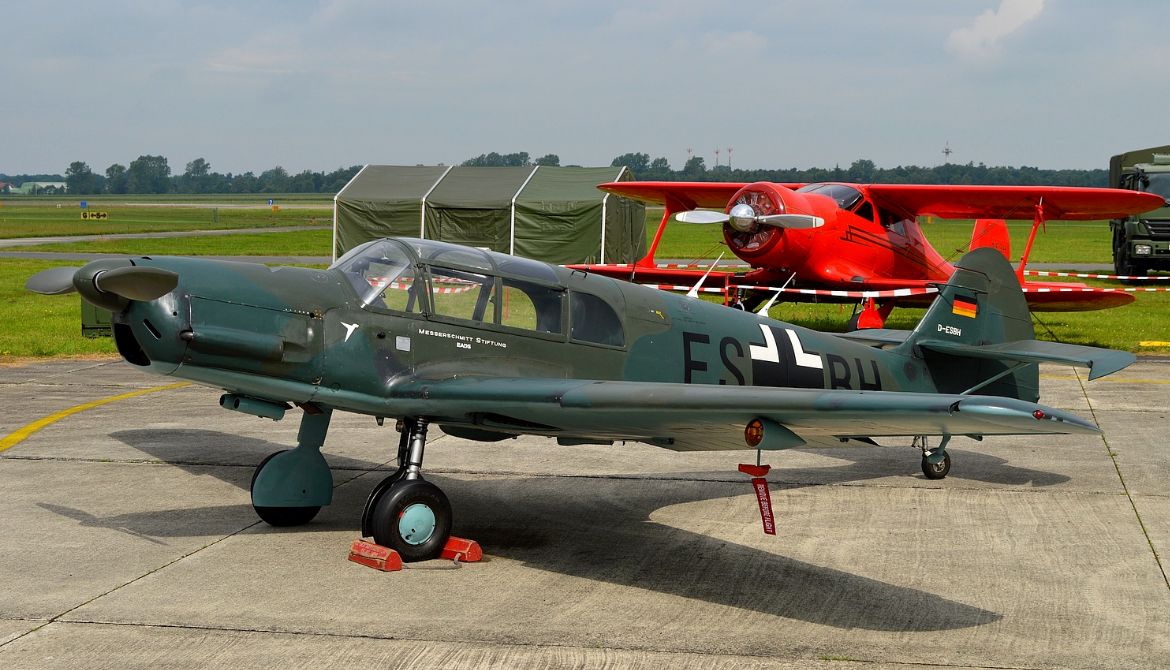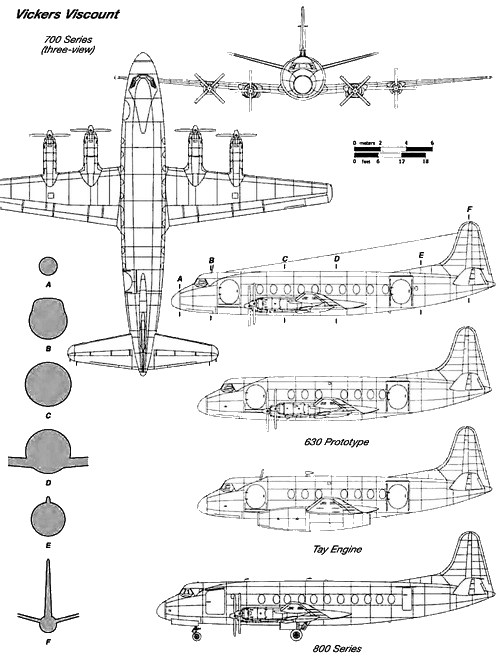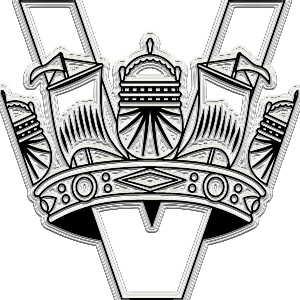Vickers Limited
Varsity T Mk 1
 |
|
| Varsity T.1 of No.1 Air Electronics School in 1971 | |
| Role | military trainer |
|---|---|
| Manufacturer | Vickers-Armstrongs |
| First flight | 17 July 1949 |
| Introduction | 1951 |
| Retired | 1976 |
| Primary user | RAF |
| Number built | 163 |
| Developed from | Vickers VC.1 Viking |
.
History Vickers Limited Armstrong Whitworth & Co Ltd
Vickers Varsity T Mk 1
 The Varsity was developed by Vickers and based on the Viking and Valetta to meet Air Ministry Specification T.13/48 for a twin-engined training aircraft to replace the Wellington T10 and the Valetta T3 and T4. The main differences were the wider-span wings, longer fuselage and tricycle undercarriage. There was also a ventral pannier to allow a trainee bomb aimer to lie in a prone position and a bomb bay with a capacity for 24 x 25lb smoke & flash bombs. The first prototype Type 668 Varsity VX828 was first flown by J 'Mutt' Summers and G R 'Jock' Bryce from Wisley on 17 July 1949. A civil version the VC.3 was planned but with the success of the VC.2 Viscount the idea was abandoned
The Varsity was developed by Vickers and based on the Viking and Valetta to meet Air Ministry Specification T.13/48 for a twin-engined training aircraft to replace the Wellington T10 and the Valetta T3 and T4. The main differences were the wider-span wings, longer fuselage and tricycle undercarriage. There was also a ventral pannier to allow a trainee bomb aimer to lie in a prone position and a bomb bay with a capacity for 24 x 25lb smoke & flash bombs. The first prototype Type 668 Varsity VX828 was first flown by J 'Mutt' Summers and G R 'Jock' Bryce from Wisley on 17 July 1949. A civil version the VC.3 was planned but with the success of the VC.2 Viscount the idea was abandoned
The Swedish Air Force operated a single Varsity from January 1953 to 1973 mainly for electronic intelligence missions. The Swedish military designation was Tp 82.
The Varsity was withdrawn from service with the RAF in May 1976, its role as a pilot trainer being taken over by the Scottish Aviation Jetstream T1, and as a navigation trainer by the Hawker Siddeley Dominie T1.
The last flying example (Serial WL679) was operated by the Royal Aircraft Establishment; it was retired into preservation at the RAF Museum in 1992..
Operational history

The Varsity was introduced to replace the Wellington T10 trainer. Following deliveries to trials units the first production aircraft were delivered for operational use in 1951 to No. 201 Advanced Flying School at RAF Swinderby, where they were used to train pilots to fly multi-engined aircraft. It also equipped two Air Navigator Schools in 1952, and the Bomber Command Bombing school, with the job of training crews for RAF Bomber-Command's V-bomber crews

TCA's procurement of the Viscount generated considerable interest from airlines and industry figures across the United States, including American aviation pioneer Howard Hughes, who purchased 15 Viscounts immediately after personally flying one. US Capital Airlines became an important operator of the Type 700 Viscount, using it heavily throughout the eastern US routes; in 1958, Capital reportedly had accumulated over 350,000 flight hours on its Viscounts, more than any other operator. Continental Airlines and Northeast Airlines also became US Viscount operators.

0
KmCeiling
0
KmCombat RANGE
0
Km/hAircraft Speed
0
Max Crew
Photo Gallery
Vickers Limited Armstrong Whitworth & Co Ltd
Vickers Vickers Varsity T Mk 1


Vickers Limited Armstrong Whitworth & Co Ltd
Vickers Varsity T Mk 1
General Info
-
-
- Crew: four
- Length: 67 ft 6 in (20.57 m)
- Wingspan: 95 ft 7 in (29.13 m)
- Height: 23 ft 11 in (7.29 m)
-
Powerplant
-
-
- Wing area: 974 sq ft (90.5 m2)
- Empty weight: 27,040 lb (12,265 kg)
- Powerplant: 2 × Bristol Hercules 264 14-cylinder radial engine, 1,950 hp (1,450 kW) each
-
Performance
- Maximum speed: 288 mph (463 km/h, 250 kn) at 10,000 feet (3,000 m)
- Range: 2,648 mi (4,262 km, 2,301 nmi)
- Service ceiling: 28,700 ft (8,700 m)
- Rate of climb: 1,400 ft/min (7.1 m/s)
.
Links to Youtube & Others
In late 1960, the People's Republic of China had begun negotiations with Vickers for as many as 40 Viscounts, but negotiations were protracted due to political tensions
Vickers Varsity T Mk 1
BEA, and its nationalised successor British Airways (BA), vigorously operated the Viscount on Britain's domestic routes
Youtube Link
The first airline in Latin America to operate the Viscount was Cubana de Aviación. Cubana's −755D Viscounts, delivered in 1956,


